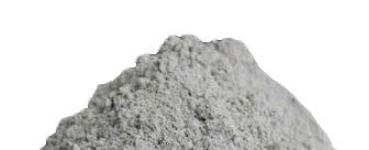What is Cement
In a nutshell, cement is a binding material made of lime or clay, mixed with water to form mortar, or mixed with sand, gravel, and water to make concrete.

Cement is the substance that is used extensively in the work of construction to set or harden or adhere materials. The main function of cement is to bind the material together and that is why cement is essentially known as a binding agent.
There are very rare occurrences of cement being used on its own, cement is always used with aggregates, the likes of sand and gravel along with water. Through many surveys, cement came up as the most commonly and extensively used material in this world and it also takes only the second place when it comes to consuming resources, losing the first place to water.
Cement mixed with sand, gravel, and water produces concrete, which is a common material for all most all types of construction work. Cement also produces mortar for masonry works by getting mixed with finer aggregates.
Nearly 4 billion tons of cement are produced every year, globally. If the cement industry is considered as an independent country, it would be the third largest emitter of carbon dioxide, with nearly 2.8 billion tons every year. The initial process of cement production is responsible for nearly 4% of global CO2 emissions.
Read Also: Different Types of Cement Test
Early History of Cement
The history of cementing material is as old as the history of engineering construction. Some kinds of cementing materials were used by Egyptians, Romans, and Indians in their ancient constructions.
Chemically speaking the cement we see today, (a product of lime that works as a primary bonding agent) is far away from the material used in past for cementation. The Assyrians and the Babylonians were found to use bitumen to bind their alabaster or burnt bricks.
Ancient Egyptians on the other hand used mortar, made of half burnt gypsum and sand to cement their blocks of stone. Most of these mortars more than often had calcium carbonate present in them.
In ancient Greece, especially in Crete, lime was used. There is also evidence that supports the use of crushed potsherds as artificial pozzolan, in the place of hydraulic cement.
These pozzolans were found as different tuff in Roman and Greek civilizations. Whereas the Greeks, generally used volcanic tuff that they got from their island of Thera. Meanwhile, the Romans used volcanic ash with lime.
From the middle age, there are no such knowledge found as a literature form, but the military engineer and medieval masons used a mixture of aggregates and lime mortar as a cementing agent to build structures like fortresses, harbors, mansions, and even canals.
Then, in the 16th century, Spaniards introduced Tabby to the Americans. Tabby was a building material where the binding agent was the lime found in the shells of oysters and the whole oyster shell was a part of the concrete.
Then in the 18th and 19th centuries with the advancement of chemical engineering, cement went through many experiments and experiences to finally create the great binding agent, that we see today.
There are various types of cement available in the market today, but the most common type of cement is Portland cement which is used all over the world. We have already discussed ‘types of cement’ in another article, you can read it here – Types of Cement.
Read Also: